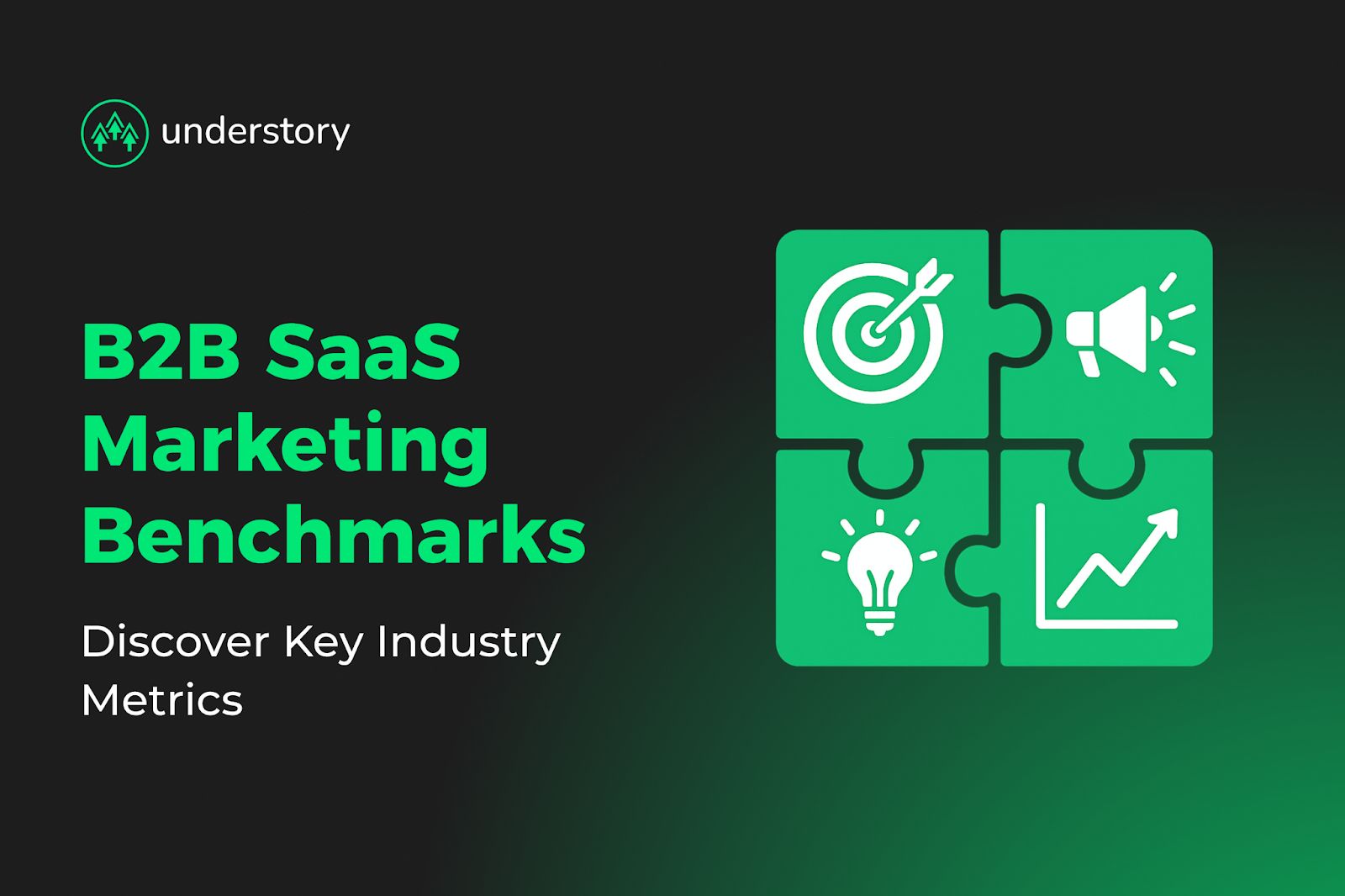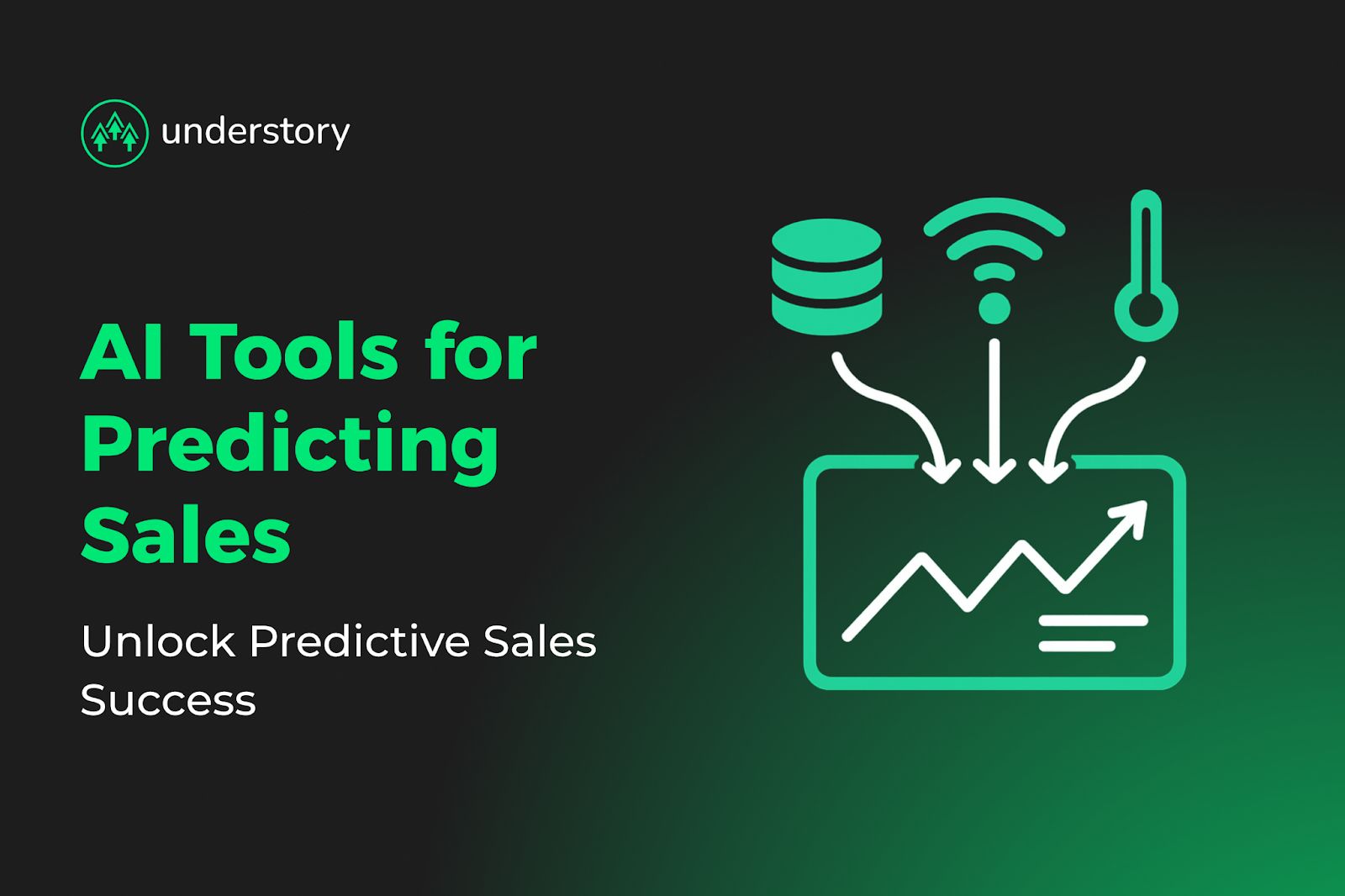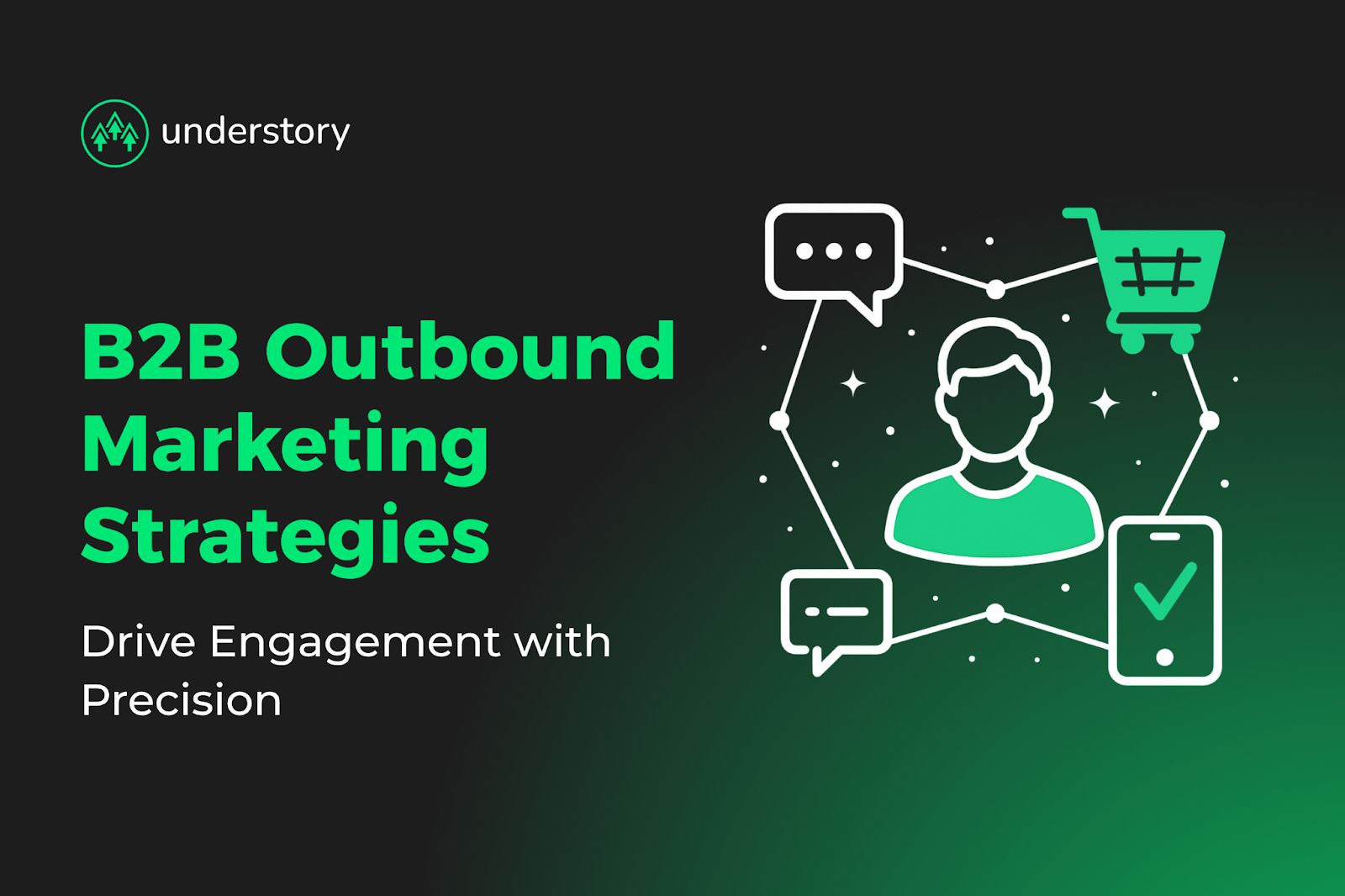
2025 B2B SaaS Marketing Benchmarks & Strategy
Industry data on customer acquisition costs, lead conversion, channel ROI, and trust-building strategies for growth leaders.

Implementation playbook for B2B SaaS leaders coordinating marketing across AI adoption and pricing evolution.
The SaaS organizations gaining market share in 2025 are recognizing industry trends early and executing strategically. Your competitors are making decisions right now about AI-native positioning, security as a revenue enabler, and usage-based pricing alignment, while their growth teams turn competitive intelligence into compounding advantage.
We'll walk you through 10 SaaS trends and show how to apply each one to your marketing execution, with actionable steps so you can identify roadmap adjustments, spot opportunities competitors might miss, and execute coordinated campaigns that capitalize on market shifts.
You no longer earn bragging rights for sprinkling machine learning on top of a legacy workflow. SaaS buyers now expect every click to be assisted by generative or agentic intelligence. By 2025, the dominant pattern is "AI agent + API". Generative AI models draft emails, code, and knowledge-base articles; agentic AI orchestrates full support tickets, journal entries, and marketing campaigns without waiting for a rules engine.
The upside to the AI trend only materializes if you reshape your own operating model. Here's where to start:
SaaS marketing operations can apply these AI-native principles to improve campaign execution. Tools like Clay automate hours of prospect research that growth teams would otherwise handle manually, while ChatGPT and Claude generate personalized outreach at scale. Coordinated workflows mean research from Clay feeds directly into automated personalization that maintains consistent positioning across paid media, outbound sequences, and creative assets.
While your competitors slap AI features onto legacy products, winning SaaS teams are redesigning their architecture from the ground up around generative and agentic intelligence.
Security conversations that once happened with IT auditors now start in your first sales call. Buyers want proof that their data is safe before they sign. That shift puts security, privacy, and data governance squarely in the front office, right alongside product and revenue strategy.
Prospects increasingly filter vendors by SOC 2 Type II or ISO 27001 certification, and your security posture influences renewal decisions as much as new features. Technical leaders are responding with zero-trust architecture, verifying every user, application, and data access request each time it happens.
You can move just as quickly, without grinding innovation to a halt, by operationalizing a few high-leverage practices:
Your marketing operations need the same rigor around data compliance. Every outbound campaign and CRM enrichment workflow touches personal information governed by GDPR, CCPA, and industry-specific regulations. Clay's enrichment workflows sync to HubSpot and Salesforce for centralized data management, tracking prospect data throughout the marketing process.
When you demonstrate airtight governance up front, you shorten sales cycles, reduce churn anxiety, and free your team to focus on building the features customers want next.
Growth teams can waste months waiting for engineering bandwidth on basic operational tools. Low-code and no-code (LCNC) platforms like Retool, Airtable, and Zapier solve this coordination nightmare by letting operations managers, marketers, and customer success leads ship production-ready apps themselves. They create "citizen developers" who automate workflows that bog down your teams: onboarding portals built by customer success, usage dashboards assembled by product managers, or regional pricing calculators created by sales ops.
The same logic applies to marketing automation. For instance, Clay partner agencies, known as Claygencies, can build automated lead enrichment tables that sync prospect data across CRMs without custom development work, while Make.com orchestrates complex multi-step campaigns across paid media platforms, outbound sequences, and CRM systems.
Growth leaders face a choice between competing with horizontal platforms that serve everyone poorly or owning a specific workflow completely. Vertical solutions are pre-configured for industry compliance and can deploy in hours rather than weeks, unlike generalist platforms requiring extensive customization.
Modern development stacks let small teams launch customer-facing applications rapidly because hosting, authentication, and billing come pre-packaged. When you specialize in healthcare, financial services, or legal tech, and your product already handles HIPAA, SOC 2, or niche tax codes, procurement cycles shrink and budget holders choose you over generic suites.
This same specificity matters in how you market to vertical buyers. Clay's lead generation capabilities let growth teams build prospect lists filtered by industry-specific signals: compliance certifications, technology stack indicators, regulatory filings, and vertical software adoption patterns. These enriched lists trigger personalized outbound sequences that reference vertical pain points, shortening sales cycles.
If you're building vertical or micro-SaaS solutions, focus your runway on specific tactical improvements:
Narrowing scope widens impact; you own the critical workflow that generalists overlook and win loyalty through depth rather than breadth.
In-app dashboards are the product driving net-new revenue in 2025. Platforms layering predictive models into workflows win upsell deals because users stay inside the product instead of exporting data to spreadsheets. This same motion powers Data-as-a-Service revenue, as anonymized, aggregated data sets packaged as SKUs for competitive benchmarks, market forecasts, and risk scoring.
Vertical software vendors dominate this space. Construction software firms surface cash-flow risk scores, and outpatient clinic platforms deliver patient throughput benchmarks. These offerings command premium pricing because they compress analysis time and deliver context that traditional BI tools miss.
Your marketing team needs the same caliber of analytics infrastructure to prove campaign ROI across disconnected platforms. Looker Studio pulls data directly from LinkedIn, Meta, and Google Ads into unified dashboards. Porter Metrics feeds multi-channel ad data into live reporting without custom integrations, while Fibbler closes the attribution gap by connecting LinkedIn ad engagement to CRM pipeline data.
Seat-based licensing breaks down when AI agents close support tickets or draft code without human logins. When software does the work instead of people, charging per person becomes obsolete. Outcome pricing, tying fees to leads generated or hours saved, emerges alongside consumption models, enabled by the granular telemetry your product already captures.
Moving beyond flat seats delivers clear benefits. Customers pay only for consumption, expansion happens organically as usage rises, and you gain pricing power for premium AI features.
You can de-risk the transition through intentional rollout:
When you roll out pricing changes, coordinated campaign execution becomes critical. Prospects need consistent explanations in LinkedIn ads, email sequences, sales materials, and demo conversations. Coordinated execution ensures your paid media highlights the flexibility of usage-based models, outbound sequences address common pricing objections, and sales materials provide clear examples that match initial messaging.
This approach lets you meter what actually drives outcomes, aligning revenue with real value while future-proofing against the seat-count decline that automation accelerates.
Cloud costs can make or break gross margin. FinOps gives you the playbook with three pillars: visibility, optimization, and forecasting. These turn raw usage data into decisions that everyone can act on.
Here's where to focus your efforts:
Apply these same FinOps principles to your marketing spend. Porter Metrics and Looker Studio provide real-time dashboards showing LinkedIn, Google, and Meta spend in one view, catching budget overruns and underperforming channels before monthly reviews. Unified reporting surfaces which campaigns deliver qualified pipeline at sustainable cost per acquisition.
Treat FinOps as a cross-functional muscle, and cost management becomes a growth lever rather than a post-mortem exercise.
Today, you might be juggling dozens of log-ins, duplicate data models, and overlapping invoices while every misconfigured switch becomes a breach headline. Fragmented tooling leaves blind spots wide open.
A quick way to regain control is a "Keep-Consolidate-Kill" audit. Keep apps that power truly unique workflows or regulatory must-haves. Consolidate categories where two or more tools solve the same problem into a single platform. Kill legacy or under-utilized tools that add risk without return.
Your marketing stack likely needs the same treatment. Growth teams juggle separate platforms for paid media management, email sequencing, LinkedIn outreach, CRM enrichment, and analytics dashboards. Clay partner agencies, known as Claygencies, consolidate this fragmentation by building enrichment and orchestration workflows in one platform that syncs to HubSpot or Salesforce for unified reporting.
Boards now ask for carbon accounting alongside annual recurring revenue (ARR), procurement teams weigh sustainability scores in RFP decisions, and growth leaders waste time coordinating between efficiency initiatives and green reporting when both should connect directly to competitive advantage.
The efficiency gains you've made in cloud spend and AI performance already reduce your energy footprint. Turn sustainability metrics into sales wins with visible, verifiable proof:
Sustainability becomes a competitive advantage when you measure it transparently and optimize it continuously. The same operational rigor that reduces cloud costs also shrinks your carbon footprint, turning environmental responsibility into a measurable business outcome rather than a compliance checkbox.
You can no longer afford to treat customer success as a support function, as a large portion of revenue now comes from renewals and expansions, not net-new deals. In a funding-tight market, protecting and expanding existing revenue is the shortest line to sustainable growth.
The most effective teams use AI-powered customer intelligence to surface churn risk and expansion signals long before renewal. Leaders deploy predictive analytics and automated workflows to scale engagement across every tier.
These same enrichment capabilities that power new customer acquisition work just as well for identifying expansion opportunities in your existing base. Clay workflows monitor customer signals like new funding rounds, leadership hires, competitor software adoption, and technology stack changes that indicate upsell timing. OutboundSync feeds this intelligence into CRM systems where customer success teams can trigger expansion conversations before renewal deadlines.
Digital-led models, self-service portals, in-app guidance, and workflow automation handle routine touchpoints, allowing human CSMs to focus on strategic outcomes. Marketing and CS are merging around shared KPIs, using consolidated customer data to orchestrate personalized journeys that drive product adoption and upsell opportunities.
These ten trends share a common thread: execution speed matters more than perfect strategy. SaaS organizations that recognize shifts early and coordinate implementation across all channels gain compounding advantages over competitors still planning their response.
Your competitors are reading the same trends, and the advantage goes to whoever implements them first. But you risk falling behind if you're stuck coordinating between paid media agencies, outbound vendors, and creative freelancers instead of testing AI-native messaging or updating your positioning for usage-based pricing.
Understory provides coordinated allbound marketing services, accounting for trend-based strategy changes across every channel. When market positioning shifts, our strategic paid media updates campaigns across LinkedIn, Meta, and Google while Clay-powered outbound adjusts personalization and creative maintains brand consistency.
Schedule a call today to see how coordinated execution helps you implement trends.

Industry data on customer acquisition costs, lead conversion, channel ROI, and trust-building strategies for growth leaders.

Choose platforms that eliminate spreadsheet forecasting and show real-time pipeline health across channels.

Build high-performing outbound systems using automation, attribution, and coordinated touchpoints across multiple channels.